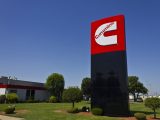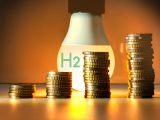
NREL might have the answer to fast-track cheaper clean hydrogen infrastructure deployment
July 31, 2024NREL’s SERA model could be a key strategy to decarbonize US transportation.
Decarbonizing transportation in the United States is no small feat and proponents of hydrogen believe using clean hydrogen and fuel cells for transportation applications – especially medium- and heavy-duty vehicles – is a vital part of decarbonization. However, to make clean H2 a real solution, this would take the successful widespread deployment of hydrogen infrastructure, like refueling stations. NREL’s newly revealed Scenario Evaluation and Regionalization Analysis (SERA) model could help to make this successful deployment achievable and at an accelerated rate.
What is the SERA model?
The SERA model, designed by the US Department of Energy’s (DOE’s) National Renewable Laboratory (NREL), provides insights that can guide the development of infrastructure and investment decisions for transportation, speeding up the adoption of hydrogen at scale.
This adoption doesn’t only include clean hydrogen transportation applications for fuel cell electric vehicles (FCEVs), but also other applications outside of the transportation sector.
Ultimately, the SERA model is designed to optimize hydrogen production, hydrogen transportation, hydrogen delivery, and hydrogen dispensing construction technology as well as timing and location.
Analyzing both supply and demand for the clean hydrogen market.
The SERA model isn’t a one-dimensional guide. Instead, the tool has been designed to analyze both the supply and demand sides of the H2 market.

For instance, it can be used to:
- Design the most cost-effective hydrogen supply-chain infrastructure required to support an evolving clean hydrogen market.
- Calculate alternative vehicle adoption.
- Discover the ideal size, locations and number of hydrogen refueling stations.
- Calculate the number and capacity of various types of hydrogen production units required to meet demand in a manner that is both cost-effective and spatially optimized.
- Estimate the consumption of fleet-wide travel, energy and fuel.
The SERA tool is highly flexible as inputs can be custom configured to address an array of scenarios defined by users. It can also complement other NREL and DOE infrastructure analysis tools.
Flexibility is what makes SERA so unique.
 Although designed to help optimize clean hydrogen buildout, the SERA model can be used for any fuel or material, according to Mark Chung, group manager for Infrastructure and Energy Storage Analysis at NREL. Chung explained that this includes carbon dioxide, stating as an example that SERA can model the pathways for carbon capture and storage that are the most cost effective. “SERA’s flexible framework to accommodate any commodity or mixture of commodities is truly unique in this sense,” Chung said.
Although designed to help optimize clean hydrogen buildout, the SERA model can be used for any fuel or material, according to Mark Chung, group manager for Infrastructure and Energy Storage Analysis at NREL. Chung explained that this includes carbon dioxide, stating as an example that SERA can model the pathways for carbon capture and storage that are the most cost effective. “SERA’s flexible framework to accommodate any commodity or mixture of commodities is truly unique in this sense,” Chung said.



 With over 15 years of reporting hydrogen news, we are your premier source for the latest updates and insights in hydrogen and renewable energy.
With over 15 years of reporting hydrogen news, we are your premier source for the latest updates and insights in hydrogen and renewable energy.